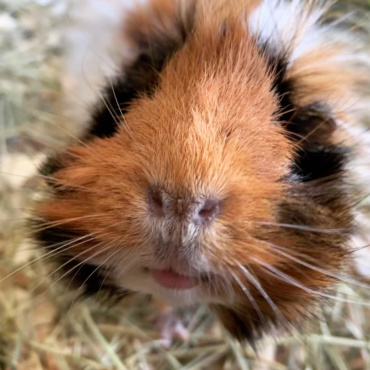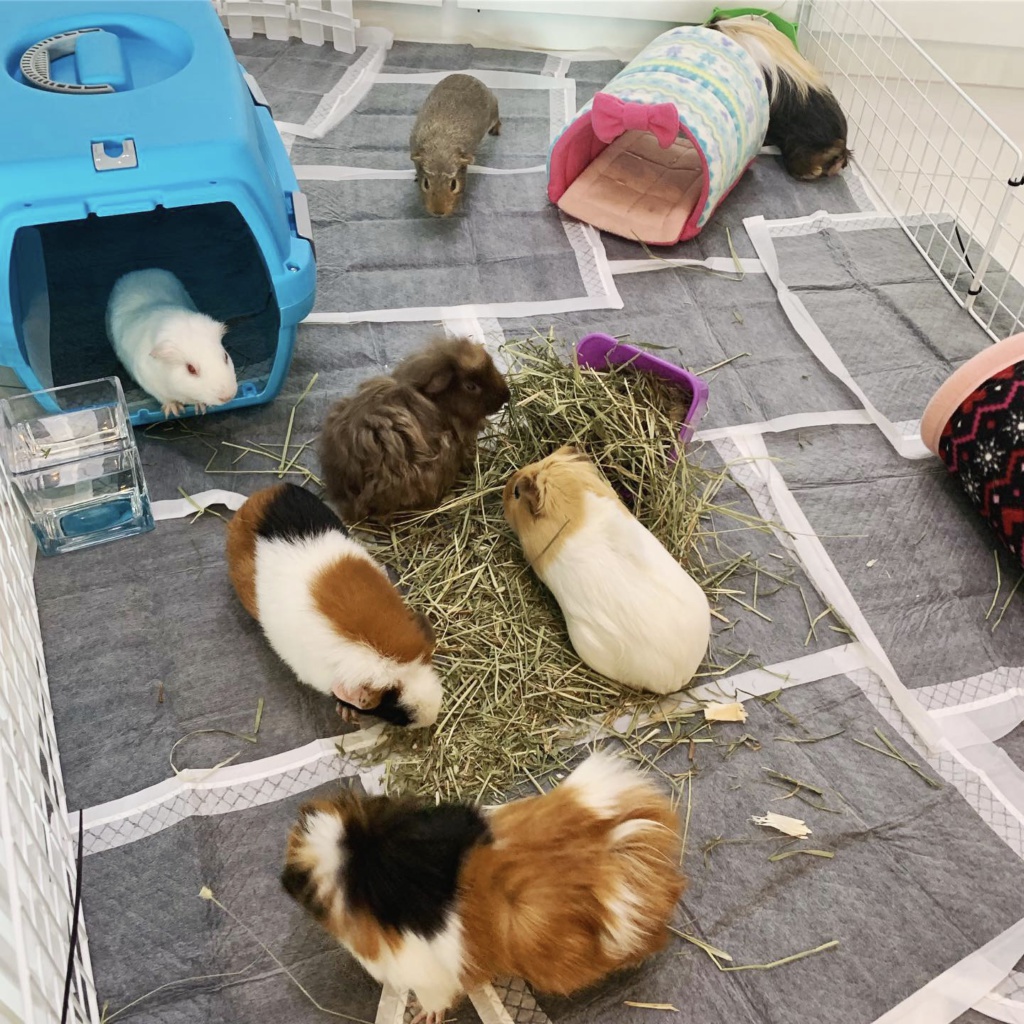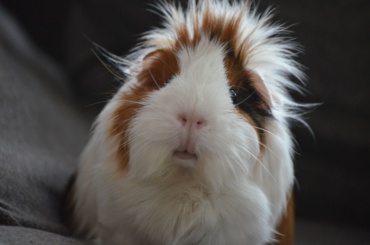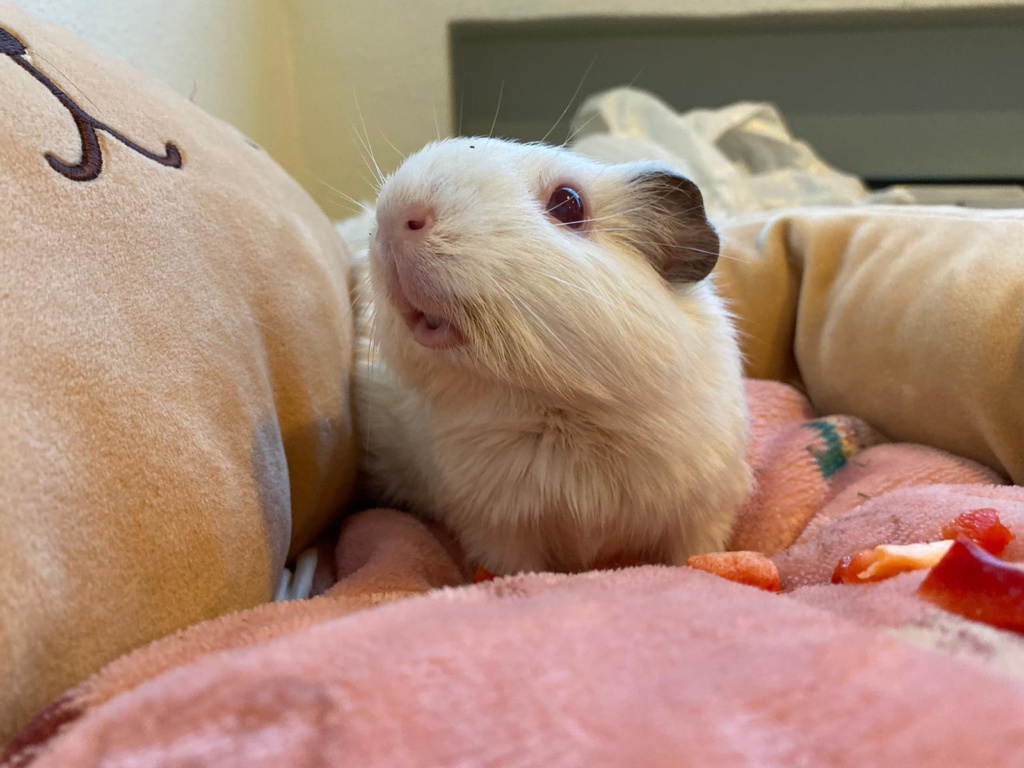Wood shavings are the subject of many a passionate debate among guinea pig lovers in Singapore. Before we get into the contentious bits, let’s start with the cold, hard, facts. Wood shavings come in the following common varieties: aspen, cedar, pine, rubber, and a mixture of wood types. Some are safe, some are not.
Cedar and pine naturally contain phenols that smell great to humans but are harmful to the delicate respiratory systems of the beloved guinea pig. The consensus seems to be that cedar, whether heat treated or not, are toxic to guinea pigs. Thus, only heat treated or kiln dried pine shavings are safe options for guinea pig bedding. Aspen shavings, on the other hand, do not contain harmful phenols and is commonly marketed adjacent to small animal paper bedding in pet stores. No information currently exists on the safety levels of rubber tree shavings for guinea pigs, so steer clear to stay safe. In summary, only aspen or heat treated pine shavings are appropriate bedding types for guinea pigs.
Pro tip: Wooden hideys and chew toys should also only be made from guinea pig friendly, pesticide-free wood.
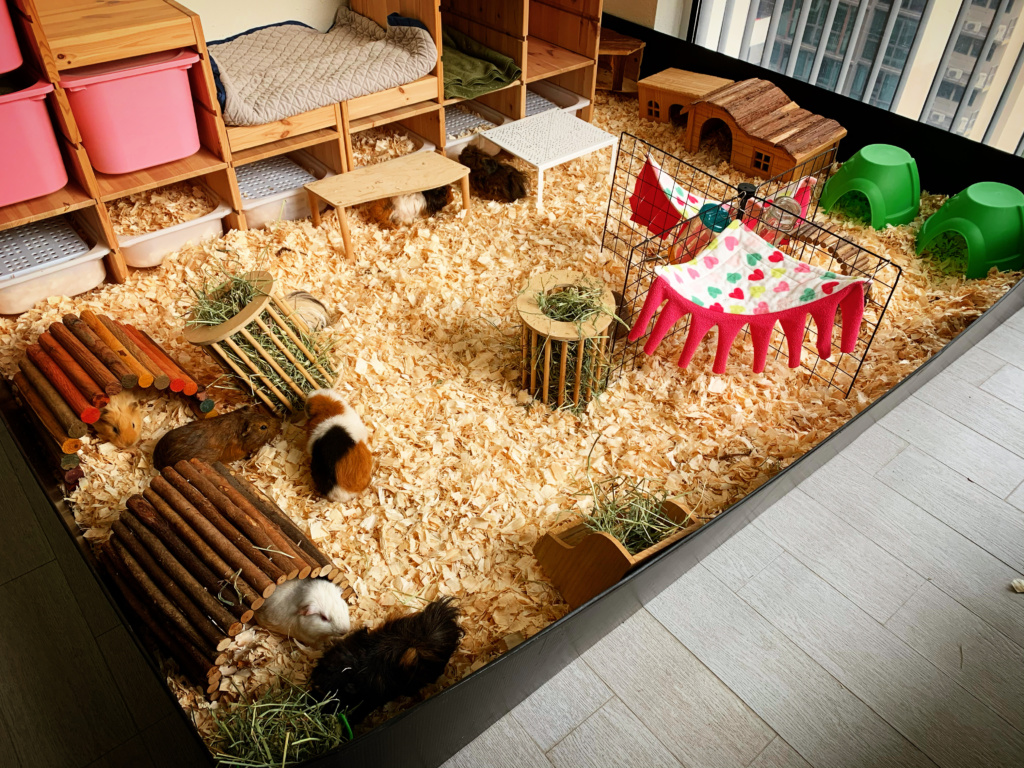
Where can I get wood shavings in Singapore?
The easiest option would be to purchase it at your local pet store, but those shavings come in small bags and are often similar in pricing to small animal paper bedding. The more cost effective option would be to buy wood shavings from companies that sell bedding to horses. That being said, be prepared to buy a comparatively large amounts at one go. The Equine Sanctuary caters to small animal owners and are able to sell a minimum of approximately 18kg of compressed wood shavings at a time (a lot less than a horse owner would need). This is still a significant amount for guinea pigs and can last for a few weeks depending on the size of your enclosure. My favourite brand is Bluefrog as it is comprised of heat treated pine shavings that are absorbent and almost dust-free.
Factors to take into consideration when selecting wood shavings…
- Do the shavings contain a mix of potentially dangerous wood types?
- Are the shavings dusty?
- Do I have an appropriate place to store the bedding?
Make sure the wood-shavings you select is indeed safe for guinea pigs as many brands contain a mixture of different types of wood. Many pet stores also sell wood pellets or compressed wood bedding products marketed for small animals. These tend to come from unknown wood-origins and break down into dust when they come into contact with liquids. This concept also applies to wood-based cat litter — steer clear. It goes without saying that sawdust is also an absolute no go.
Pro tip: Create an easy to clean “kitchen area” for hay to keep the rest of the guinea pig enclosure relatively hay-free.
I love using heat treated pine shavings as, in my opinion, they are immensely more absorbent, odour friendly, and cost effective than the bedding types we have explored thus far. That being said, guinea pigs “popcorn” and do “zoomies” when they are happy. This can kick up bedding, so ensure that the sides of your enclosure are high enough to contain their adorable antics. Build or purchase a C&C (cube and chloroplast) cage with a height of at least 20cm. You can try your hand at DIY-ing or contact The Modern Guinea with your preferred cage specifications.
Don’t skimp on the amount of wood shavings you provide, I would recommend a minimum depth of 10cm of bedding. Many youtube videos filmed overseas proclaim that with enough depth, wood shavings only need to be changed out once a week. However, in Singapore, no bedding is likely to stay clean without daily maintenance — remove soiled areas regularly and do a full change every 7-10 days.
Pro tip: Guinea pigs tend to pee and poop under their hideys, corners of their cage, and where they eat. Spot clean those areas daily!

Another important consideration to make before choosing to go with wood shavings is whether you have adequate and appropriate indoor space to safely store wood shavings without it growing mold or harbouring insects. In most countries, buying in bulk is the way to go, but in Singapore, this increases the chances of mite infestations and fungal growth. I, unfortunately, learned this the hard way and now never buy more than a month’s worth of bedding or hay in one go. If you ever do face infestations, diatomaceous earth is a natural and effective way of deterring insects from multiplying. You can purchase diatomaceous earth locally at https://denutrients.com/ Please avoid letting your guinea pigs inhale diatomaceous earth.
Health tip: Use Revolution (Selamactin) on guinea pigs to treat mites and mange at 10mg/kg. Use this handy website for dosage calculations. https://www.guinealynx.info/dose_calculator.html
Why do so many youtube videos feature guinea pigs overseas using sawdust and other “unsafe” bedding products?
Guinea pigs were first domesticated by the Incas 3000 years ago, but animal husbandry practices have continually evolved and improved as information becomes more readily available. We learn and adapt! Secondly, guinea pigs in Singapore tend to have weaker respiratory systems than their overseas counterparts, thus ensuring that their environment is relatively dust-free is paramount to keeping them healthy. I can only hypothesize that much like other common domestic animals in our compact city-state, our pets tend to have a narrow lineage and are consequently more genetically prone to certain illnesses.
Some guinea pig owners in Singapore argue that all wood shavings are harmful and can cause respiratory issues. Given that our local furry friends are prone to such issues, you may choose to be extra cautious. However, I am of the opinion that if you do your research and ensure that the wood shavings you select do follow the above criteria, you’re in the green.
Ammonia buildup on fleece can cause issues, pee pads run the risk of being ingested, all materials have their pros and cons. Needless to say, wood shavings have their flaws too — some guinea pigs may develop allergies or be extra sensitive to certain types of wood. Observe, adapt, and don’t be afraid to mix it up!

I hope these articles help you and your guinea pigs find the perfect bedding combination. Stay tuned for the next article where I will cover a few more alternative bedding options before moving on to our next topic — Everything You Need to Know about Guinea Pigs in Singapore Part 3/6: Environment.
To review the basics go to: https://contributors.pawjourr.com/guineapigbasics/
To read more about guinea pig bedding in Singapore go to:
https://contributors.pawjourr.com/guineapigbedding1/
https://contributors.pawjourr.com/guineapigbedding2/
As usual, none of this content is sponsored.
Come say hello on our instagram account: https://www.instagram.com/mapetitemenagerie
